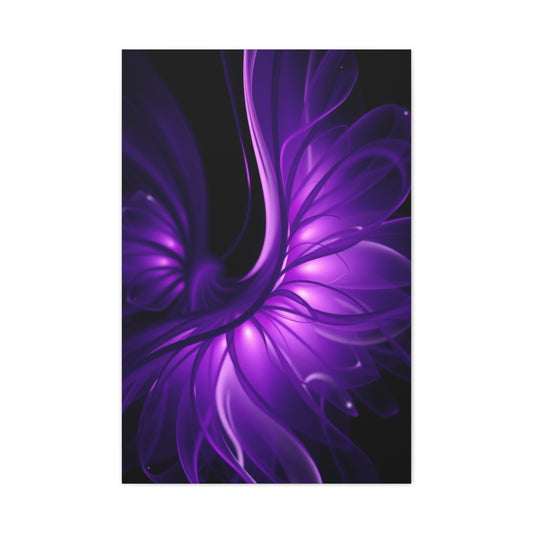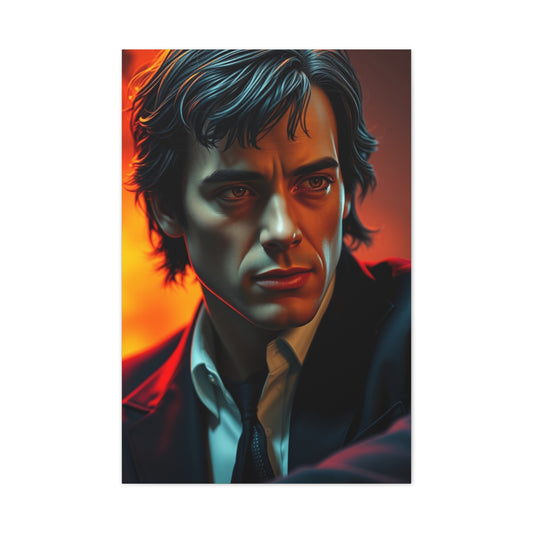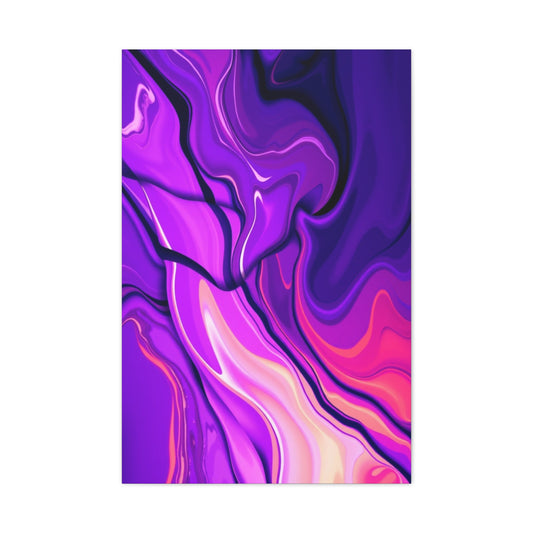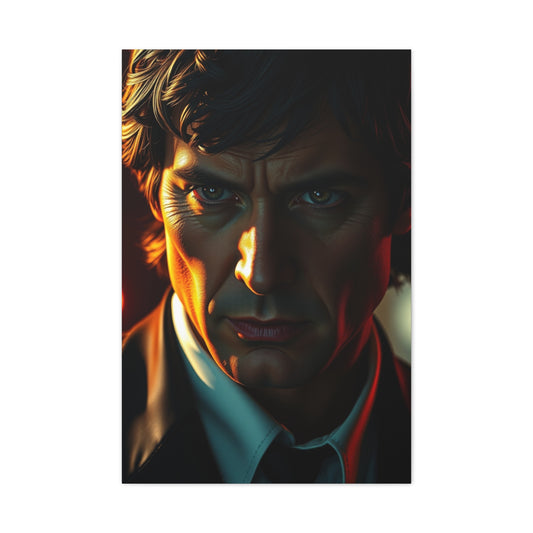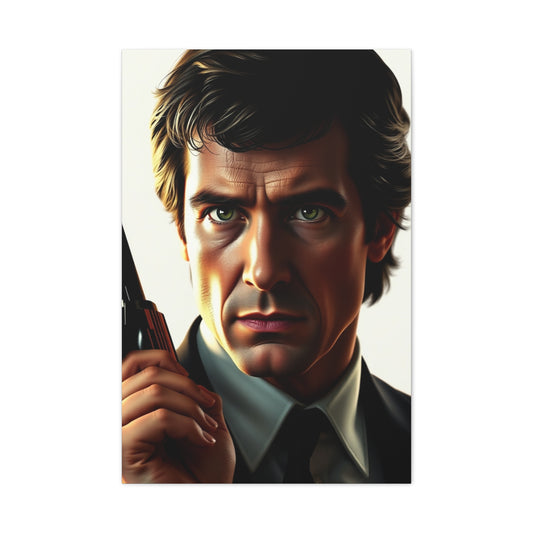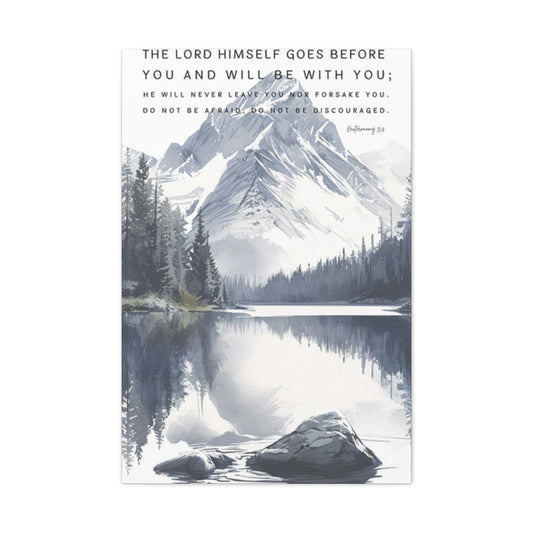If you have experience with photography, you’ve likely encountered the term “hot shoe” when attaching a flashgun to your camera. But what about the cold shoe? How is it different, and how can you make the most of it in your photography setup? In this guide, we’ll explain what a cold shoe is, how it works, and its various uses in the world of photography and video production.
Understanding the Difference Between Hot Shoe and Cold Shoe
The terms "hot shoe" and "cold shoe" might sound similar to someone new to photography, but they refer to two distinct types of mounts commonly found on cameras. Understanding the difference between them is essential for photographers who want to expand their setup with different accessories, whether it’s for better lighting, sound, or overall functionality. A hot shoe is commonly used for devices like flashguns and other camera accessories that require a direct electrical connection, while a cold shoe offers a simpler solution for holding accessories that do not require electrical contacts. By understanding their distinct functions, you can make more informed decisions when expanding your camera setup.
What is a Hot Shoe?
A hot shoe is a metal bracket located on the top of most cameras. This mount is designed for attaching external accessories, with the most common being a flashgun. The key feature that distinguishes a hot shoe is its ability to communicate electrically with the camera. The electrical contacts in the hot shoe allow the camera to send signals to the attached device, typically a flash, triggering it when a photo is taken. This makes it an essential tool for photographers who need to control external lighting in their shots, especially in low-light environments.
The hot shoe provides a secure and reliable connection for flashguns, and other compatible devices like wireless triggers, external microphones, and even light meters. Without these electrical contacts, the camera wouldn't be able to synchronize properly with the external device, which could lead to missed shots or improper lighting. The simplicity and reliability of the hot shoe make it a go-to for many photographers, especially those involved in studio, portrait, or event photography where external lighting plays a crucial role in the final result.
What is a Cold Shoe?
In contrast, a cold shoe looks very similar to a hot shoe in terms of its shape and structure but functions differently. The cold shoe lacks the electrical contacts that a hot shoe has. This absence of electrical components means that it cannot trigger a flash or send signals to other accessories in the same way that a hot shoe can. The cold shoe, therefore, serves as a mounting point that provides a secure attachment for non-electrical devices.
The term “cold” refers to the lack of electrical capabilities, making this mount ideal for securing accessories like microphones, external monitors, or even GoPro cameras. While it may not serve as a trigger for flashes or other powered devices, it still offers significant versatility. Photographers often use cold shoes to mount additional accessories that are critical for video recording or audio capture, where electrical signals aren’t required.
The Advantages of Using Cold Shoes
One of the most significant advantages of cold shoes is their versatility. Even though they do not have electrical contacts, cold shoes provide an effective way to mount accessories without the need for specialized mounts or attachments. This makes cold shoes ideal for situations where you need to keep your setup lightweight and easy to manage.
Cold shoes are commonly used in video production, especially when attaching external microphones. Video shooters need clear and high-quality audio, and by attaching a microphone to the cold shoe mount, they can ensure better sound quality while keeping the camera setup clean and compact. Similarly, cold shoes are great for mounting small LED lights, video monitors, or even a GoPro, giving videographers the flexibility to work with various tools without overwhelming their gear.
Another advantage of cold shoes is that they can provide more stability for off-camera flash setups. For photographers who want to use a flash without placing it directly on the camera, cold shoes offer a secure and convenient solution. By using a cold shoe mount with an adjustable arm, you can position the flash in any direction, creating more dynamic and flattering lighting effects.
How Cold Shoe Extensions Enhance Your Setup
In some cases, you may want to place your flash or other accessories away from the camera to improve lighting. This is where cold shoe extensions come into play. Cold shoe extensions are brackets that extend from the hot shoe to the side of the camera, allowing you to mount flashes and other accessories off-camera. This setup improves the lighting conditions by keeping the light away from the camera, making it more flattering and reducing harsh shadows.
Cold shoe extensions come in several designs, such as the L-shape or more flexible versions with adjustable arms. They can support various accessories, such as microphones, lights, and flashes. For instance, if you're shooting a portrait and want softer lighting, you can use a cold shoe extension to move the flash away from the camera, preventing the harsh lighting that direct on-camera flashes produce.
These extensions are also excellent for event or news photographers who need to move quickly between locations while still ensuring proper lighting. Rather than setting up separate light stands, cold shoe extensions allow for more efficient setups. They are an excellent tool for those who want to carry minimal gear but still require off-camera lighting for optimal results.
Cold Shoe Adapters for Additional Flexibility
For even more versatility, cold shoe adapters offer the ability to attach microphones, LED lights, or even external video monitors to the camera. This is especially useful for videographers who rely on external audio and visual tools. For instance, a cold shoe adapter is a great solution for attaching a shotgun microphone to your camera. By securing the microphone in the cold shoe, you ensure that it remains stable during shooting, improving both the quality of the sound and the ease of use for the camera operator.
Cold shoe adapters can also be used for other accessories that don’t require electrical connections. For example, they can be used to mount light meters or stabilization equipment. By freeing up the hot shoe for other uses, the cold shoe ensures that you can use multiple devices simultaneously without the need for additional mounting systems.
How to Use a Cold Shoe Effectively
Using a cold shoe is straightforward and doesn’t require specialized knowledge. Most cold shoes come with a simple attachment mechanism that allows you to slide them into your camera’s hot shoe. Once the cold shoe is installed, you can then attach your desired accessory. Some cold shoes include additional features, such as locking mechanisms or adjustable arms, to provide extra security for your accessories.
When using a cold shoe, it’s important to check the compatibility of your camera and accessory. While most cold shoes are designed to fit standard camera mounts, it’s always wise to double-check that your device will fit securely in the cold shoe mount. If you’re using an adjustable cold shoe with a mounted accessory like a microphone or flash, make sure the arm or bracket is tightened to prevent accidental slipping or tilting.
The Versatility of Cold Shoes in Modern Photography
The cold shoe is a key component of modern photography and video production setups. Whether you are using a DSLR or a mirrorless camera, cold shoes provide a simple but effective way to attach a variety of accessories to your camera. From off-camera flash setups to microphone mounts, cold shoes offer a solution that can help improve your workflow and give you more creative freedom.
Cold shoes are especially beneficial for photographers and videographers who need to work with multiple devices simultaneously. They allow you to mount additional accessories without crowding your camera setup, making them ideal for both still photography and video work. Whether you are capturing high-quality images, filming a documentary, or shooting a commercial video, the cold shoe helps you optimize your gear for the best possible results.
Common Uses of Cold Shoes in Photography and Video Production
Cold shoes are incredibly versatile and can be used in a variety of ways to enhance your setup. Below are some of the most popular uses of cold shoes in photography and videography:
1. Cold Shoe Mount for Off-Camera Flash
A cold shoe mount is a versatile and essential tool in photography, primarily used for mounting flashguns or speedlights on tripods, light stands, or other photography rigs. This simple but effective accessory is widely used for both amateur and professional photographers, especially those looking to create off-camera lighting setups. The cold shoe itself is a receptacle that allows you to securely attach a flash unit or other accessory without worrying about it falling off, as it provides a firm and stable platform.
Cold shoe mounts are available in many designs and configurations, each catering to different needs. The most basic design features a simple bracket at the top where the flash is mounted, with a threaded screw mount at the bottom that fits into a tripod or light stand. This design makes it easy to use, providing a straightforward way to position your flash where you need it. By using a cold shoe mount, you can set up your flash off-camera and position it in various places, helping you achieve the perfect lighting angle for your subject.
Adjustable cold shoe mounts offer added flexibility. These mounts come with articulated arms or adjustable brackets that allow the flash to be positioned at different angles. This is especially useful for photographers who need to experiment with different lighting setups or who want more control over the direction of light in their shots. Many of these mounts also feature additional slots that allow photographers to attach other accessories, such as shooting umbrellas, diffusers, or softboxes, which can soften or diffuse the light for a more professional and flattering result.
Since cold shoe mounts do not have electrical contacts, they rely on wireless triggers or optical sensors to activate the flash. Photographers can use wireless triggers to communicate with the flash and ensure proper synchronization between the camera and the flash. These triggers use either radio signals or infrared signals to fire the flash remotely, providing a wireless connection that is ideal for off-camera flash setups. Wireless triggers are particularly useful in studio settings, where multiple flashes need to be used simultaneously to create complex lighting effects.
For more creative possibilities, cold shoe mounts can also be used for other lighting setups, such as mounting LED lights or continuous lighting units for video work. In these cases, the cold shoe mount provides a secure attachment point for the light while maintaining a clean and portable setup. With its stability and flexibility, the cold shoe mount is an invaluable accessory for photographers and videographers looking to improve their lighting setups.
2. Cold Shoe with Electrical Contacts
While a basic cold shoe is typically a non-electrical mount, there are also cold shoes with built-in electrical contacts. These specialized cold shoes allow you to connect the camera’s hot shoe to the cold shoe via a cable, enabling you to trigger flashes or other devices without needing wireless triggers. Cold shoes with electrical contacts serve a similar purpose to hot shoes, but instead of being used directly on the camera, they provide an extension or alternative for mounting devices that require electrical synchronization.
These cold shoes with electrical contacts allow for a more direct connection between the camera and the external flash, making them ideal for photographers who need reliable flash control. In such setups, the camera communicates directly with the flash using the electrical contacts, triggering the flash at the right moment. While cold shoes with electrical contacts may not be as commonly used today due to the advent of wireless technology, they still serve a crucial role in some specialized setups.
One of the most common uses of cold shoes with electrical contacts is when multiple flashes need to be connected to a single camera. For instance, photographers working with multiple light sources in a studio may use a cold shoe extension or a cold shoe with electrical contacts to link several flashes together. This setup allows photographers to control and synchronize all the flashes at once, ensuring consistent lighting and smooth operation throughout the shoot. Cold shoe extensions with electrical contacts can be used in situations where you need to connect multiple flash units to a camera, often through a specialized cord or PC-sync cable.
These types of cold shoes are especially beneficial for portrait photographers or event photographers who frequently use multiple flashes to light up a scene. They provide a reliable way to connect and control various lighting devices, reducing the complexity of wireless synchronization. Additionally, cold shoes with electrical contacts are often used in more complex studio setups, where precise control over each light source is essential.
However, with the rise of wireless technology, cold shoes with electrical contacts have become less common in modern setups. The popularity of wireless triggers and receivers has led to a decline in the use of wired connections for flashes. Wireless systems allow for greater flexibility and ease of use, eliminating the need for multiple cables and ensuring that photographers can quickly adjust the lighting setup without having to deal with the limitations of wired connections.
That said, cold shoes with electrical contacts still offer specific advantages in some situations. For example, they are useful in environments where interference with wireless signals might be an issue, or when photographers need to use multiple flashes that must be physically connected to the camera. In these cases, cold shoes with electrical contacts provide a reliable and stable connection that ensures the flashes will trigger when needed.
3. Cold Shoe Extensions for Off-Camera Lighting
Cold shoe extensions are indispensable tools for photographers looking to expand their lighting options without the need for bulky equipment like additional light stands. By using cold shoe extensions, you can mount your flash off-camera, allowing you to position the light source in a way that creates more dynamic and professional lighting effects. This setup is especially valuable when working in tight spaces, such as during event photography or in on-location shoots where portability and flexibility are key.
Cold shoe extensions typically come with brackets that extend the mount to the side of your camera. This simple yet effective design allows you to position your flash off-center while still keeping it securely attached to your camera system. The placement of the flash off-camera provides several advantages over directly mounting it to the camera, such as creating more flattering, natural light by reducing harsh shadows that can be cast when the flash is placed directly on top of the camera.
For instance, when photographing portraits, placing the flash to the side of your subject can produce softer, more flattering light that highlights the subject's features in a more natural way. This is especially important when shooting in situations where you want to avoid the flat look that a direct-on-camera flash often creates. Cold shoe extensions offer the flexibility to experiment with different angles and lighting techniques, enhancing the overall quality of your work.
One of the main benefits of cold shoe extensions is that they eliminate the need for additional light stands. Typically, light stands take up space and add weight to your photography setup, which can be inconvenient when you're shooting in dynamic environments, such as during events or while moving quickly between different locations. Cold shoe extensions make it possible to achieve professional-level lighting setups while keeping the gear compact and easy to manage.
These extensions are especially favored by event photographers, news photographers, and documentary filmmakers. The compact and flexible nature of cold shoe extensions makes them a preferred tool when you need to maintain a lightweight, portable setup while still achieving high-quality lighting. The design of the cold shoe extension ensures that you can place your flash in a variety of positions to create the desired lighting effect, making it easier to work quickly and efficiently in fast-paced environments.
4. Cold Shoe Adapters for Microphones and Accessories
With the rise of DSLR and mirrorless cameras featuring video recording capabilities, cold shoe mounts have become essential for attaching various accessories, such as microphones, LED lights, and external monitors. The cold shoe adapter provides a secure and reliable platform for mounting these accessories, helping you optimize your camera setup for both video and photography. Whether you're recording an interview, shooting a vlog, or working on a documentary, a cold shoe adapter is an invaluable tool for improving your production setup.
Cold shoe adapters for microphones, in particular, are incredibly popular among videographers and filmmakers. When recording video, sound quality is just as important as the visuals, and using a high-quality microphone is crucial for capturing clear, crisp audio. By attaching a microphone to the camera via a cold shoe mount, you can improve the audio quality of your videos while keeping your setup streamlined and portable. This is especially important for on-the-go shoots where space and weight are limited, as cold shoe adapters offer a lightweight solution to mounting your microphone without the need for additional gear.
Beyond microphones, cold shoe adapters can also be used to mount a wide variety of other video accessories, such as LED lights and external video monitors. Mounting an LED light to your camera using a cold shoe adapter allows you to add consistent and controlled lighting, which is crucial for achieving the right exposure in your shots. Whether you're shooting in low-light conditions or need to add fill light, having a portable, reliable light source attached to your camera gives you more creative control.
Additionally, external video monitors are often attached using cold shoe adapters, particularly when shooting video for professional or creative purposes. These monitors allow you to get a clearer view of your shot while filming, making it easier to ensure that everything is framed correctly. With a cold shoe adapter, you can securely attach a monitor to your camera, freeing up space on your setup while maintaining full visibility of your footage.
Cold shoe adapters are designed to be user-friendly, offering simple installation and quick adjustments. Most cold shoe adapters are built to fit into your camera’s hot shoe, providing a sturdy and secure connection for your accessories. Once the accessory is attached to the cold shoe mount, it stays in place during shooting, ensuring that you don’t have to worry about your microphone, light, or monitor shifting during your work.
The versatility of cold shoe adapters also extends to other devices, such as GoPro cameras, action cameras, and even light meters. These mounts allow photographers and videographers to integrate multiple pieces of equipment into their camera setup without adding excessive weight or bulk. Cold shoe adapters ensure that your accessories are securely attached while allowing for easy access and control during the shoot.
For filmmakers and content creators who frequently work with audio and video equipment, cold shoe adapters provide an efficient and reliable solution to mount microphones, lights, and monitors. Whether you're creating a cinematic film, capturing a documentary, or filming a live event, having the right gear mounted securely and conveniently on your camera will help streamline your workflow and enhance the quality of your work.
5. Mounting Other Accessories for Versatility
Aside from lighting and audio equipment, cold shoes are also commonly used for attaching a variety of other accessories. For example, you can mount action cameras, light meters, or even handheld fans to a cold shoe mount to enhance your photography or video production experience. The versatility of the cold shoe allows photographers and videographers to expand their equipment without needing to invest in additional specialized mounts or brackets.
The beauty of cold shoe adapters is that they are often compatible with a range of accessories, making them an affordable and efficient option for adding functionality to your camera. Whether you need to stabilize your camera on a tripod or add a secondary light source, a cold shoe is an excellent option for maximizing your setup’s potential.
How to Install and Use a Cold Shoe
Setting up and using a cold shoe is an essential process for photographers and videographers looking to expand their gear setup without adding unnecessary bulk. Whether you are mounting a microphone, flash, or other accessories, a cold shoe offers a versatile and compact solution. The process of installing and using a cold shoe is typically straightforward, but it’s important to understand the specific details to ensure proper functionality. Most cold shoes are designed to fit into your camera’s hot shoe mount easily, but there are slight variations in design that you should be aware of.
When you first use a cold shoe, the installation process begins with simply aligning the cold shoe mount with the hot shoe on top of your camera. The hot shoe is a metal bracket that securely holds accessories like external flashes or microphones. Cold shoe mounts follow a similar concept but function in a non-electrical capacity, which means that they do not trigger flashes. They are used solely for securely mounting accessories that need to be positioned at a certain angle or distance from the camera.
Once the cold shoe mount is securely placed on the camera, you can proceed to attach your desired accessory, such as a microphone, flash, or light. It’s crucial to understand how each cold shoe works depending on the design. Some cold shoe mounts have threaded holes or screws, which provide additional security for the accessories, ensuring they are tightly fastened. If the cold shoe mount has a locking mechanism, it can provide even more assurance that your equipment will stay securely in place during shoots. With some designs, the cold shoe comes with a rotating arm or bracket, allowing you to adjust the positioning of the attached accessory according to your needs.
One of the most common applications of a cold shoe is attaching an off-camera flash. Cold shoe mounts with adjustable arms are particularly useful for this purpose as they allow for multiple adjustments to get the right light angle for your shoot. These mounts can be used with a wireless trigger for off-camera flash setups, which is useful for portrait photography, event photography, and product shoots. The setup allows the photographer to control the light position and angle independently from the camera, creating more flattering and creative lighting.
Choosing the Right Cold Shoe for Your Needs
When selecting the right cold shoe for your camera gear, there are a few key factors to consider. Not all cold shoes are created equal, and understanding your specific needs is essential for making the right choice. The first consideration is compatibility. Cold shoes are designed to fit most camera systems with a standard hot shoe mount, but it’s always a good idea to check the specifications to ensure compatibility. If you are working with a camera system that uses a unique hot shoe design, you’ll want to ensure that the cold shoe you choose is specifically designed for that system.
Next, think about the accessory or device you plan to mount. For photographers looking to mount flashes, there are cold shoes specifically made to hold flashguns or speedlights. These models often come with additional features such as sturdy brackets and adjustable arms to allow for precise positioning. Cold shoes designed for flashguns may also have features such as slots for umbrellas or other lighting modifiers, which can enhance the lighting setup.
If you’re planning to mount a microphone or other video accessories, you’ll need a cold shoe that offers enough stability and reliability to hold these devices securely. Cold shoe adapters specifically designed for microphones are common in the filmmaking industry, where quality sound is essential. These adapters are ideal for attaching microphones to cameras, providing a neat and secure way to record audio while filming. Some cold shoe mounts are designed to work with a wide range of accessories, including microphones, monitors, LED lights, and action cameras.
Some cold shoes are designed for specific needs, such as double-mount versions, which allow you to attach multiple accessories at once. This is particularly useful when you need to mount a flash and a microphone or video monitor simultaneously. The added flexibility offered by these designs can simplify your setup, ensuring that everything you need is attached to your camera, without the need for additional stands or brackets.
The material and build quality of the cold shoe is another important factor. Many cold shoes are made from lightweight, durable materials like aluminum or plastic. While both materials are great, aluminum offers greater strength and durability, making it more suitable for heavier accessories. However, plastic options are more lightweight and affordable, making them a good option for basic setups. If you're planning to travel with your gear or need a setup that’s easy to transport, lightweight options may be preferable.
Another aspect to consider is the weight and size of the accessory you're attaching. Some cold shoes come with additional weight support mechanisms, such as reinforced brackets or locking pins, to handle larger, heavier devices. On the other hand, if you're working with lightweight accessories like a microphone or small LED light, you can opt for a simpler cold shoe design.
For advanced photographers or videographers, consider a cold shoe extension. These extensions allow you to mount accessories off to the side of your camera, keeping the flash or microphone away from the main camera setup. This off-camera positioning enhances your shooting flexibility and helps you achieve more professional lighting setups without the need for a full light stand. Cold shoe extensions are especially useful in dynamic environments, such as event photography, where portability and compactness are crucial.
Before making your final decision, ensure that the cold shoe matches the type of camera gear you’ll be working with. Always read the product reviews, check compatibility with your camera system, and take note of any additional features the cold shoe may offer.
Conclusion
Cold shoes may seem like a simple accessory, but they offer an incredible amount of flexibility and utility for both photographers and videographers. From mounting flashes and microphones to attaching video monitors and cameras, the cold shoe is an essential tool for anyone looking to enhance their camera setup. Whether you’re working with still photography or video, cold shoes provide a secure and versatile mounting solution, helping you create a more professional and efficient workflow. Understanding the differences between cold and hot shoes, and how to use them effectively, can open up a whole new world of creative possibilities.











